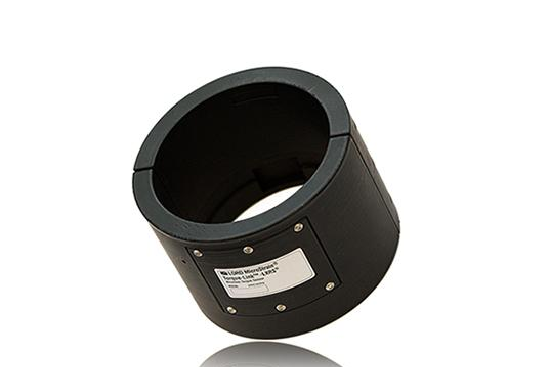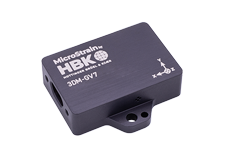Recent
-
-
MicroStrain by HBK at XPONENTIAL 2024
May 7, 2024 / Inertial
-
-
-
Introducing Version 4.0.0 of the MicroStrain ROS Driver
Jan 29, 2024 /
-
-
-
Enhancing Vision-Based Robots with IMUs
Dec 19, 2023 /
-
7 reasons to monitor torque (plus 7 reasons to use Torque-Link™)
- By Collin /
- Published Thu, 05/04/2017 - 16:14
 The Torque-Link®-LXRS® is a is a specialized analog sensor node designed to fit over rotating shafts for wireless strain and torque measurements. It features one/two differential analog input channels designed for full-bridge strain gauge integration and is ideal for static and dynamic torque measurements with full temperature compensation and bending cancellation.
The Torque-Link®-LXRS® is a is a specialized analog sensor node designed to fit over rotating shafts for wireless strain and torque measurements. It features one/two differential analog input channels designed for full-bridge strain gauge integration and is ideal for static and dynamic torque measurements with full temperature compensation and bending cancellation.
Its rugged ABS housing was engineered for remote, long-term installation on cylindrical shafts, and its wireless data transmission allows installation on rotating components without a slip ring.
Standard and custom diameters available.
Why monitor torque?
- Predict system degradation
- Monitor overload conditions
- Ensure proper rotor/engine load balancing
- Analyze driveline resonance
- Perform root cause analysis of machine failures
- Provide accurate feedback for flight controls
- Determine health of vital rotating components
LORD Sensing’s Torque-Link:
- Is easy to install and integrate
- Transmits torque data wirelessly
- Allows remote node configuration
- Uses unobtrusive, lightweight hardware
- Eliminates need for slip rings
- Is ideal for high-RPM applications
- Meets DO-160 standards for temp and vibration
TORQUE-LINK-LXRS
Specifications
- Single differential analog input channel (two-channel option available)
- Fits 2”-6” shafts (custom sizes also available)
- ±32 μsec node-to-node synchronization
- Requires 3.5” minimum axial length
- Continuous sampling up to 512 Hz
- -40° C to 80° C temperature range
- Custom-engineered ABS thermoplastic housing
- Weighs as little as 200 grams
- Low power consumption / replaceable batteries
Torque-Link Applications
Flight Testing:
LORD Sensing’s Torque-Link has been used successfully by several companies in flight test applications. Instead of relying on bulky, unreliable slip rings that require hours to install, engineers were able to quickly install Torque-Link nodes and connect it to a wireless system for fast and accurate torsional strain measures.
Off-Highway Vehicles:
The limitations of slip rings is perhaps most apparent on the proving grounds for off-highway vehicles. During development tests, slip rings may last only 100-200 hours before failure, while the Torque-Link wireless node has been proven to endure for more than 1,000 hours. In addition, removing a failed slip ring may require several hours. A Torque-Link, meanwhile, requires less than five minutes for removal, battery replacement, and re-installation.
Rotating Machinery Analysis:
Engineers performing root-cause analysis for rotating machinery failures use the Torque-Link in burst mode (up to 4 kHz) due the higher frequency required for analysis of torsional vibration and driveline resonance. In the field, a system of more than ten Torque-Links has been used by a company to analyze how driveline resonance caused driveshaft failures on fracking pump trucks. LORD Sensing’s Torque-Link technology successfully analyzed the situation and provided a damping solution.
Condition-Based Maintenance:
Many companies currently rely on accelerometers and thermocouples to measure bearing vibration, pump vibration, machinery vibration, and temperature. Using a LORD Sensing Torque-Link not only accomplishes the same goals but also increases accuracy and can also identify other issues-- helping to more fully diagnose failures and plan maintenance cycles, which can, in turn, save up to $1 million per hour that would have been lost during unplanned maintenance downtime.
Click here for more information on LORD Sensing-MicroStrain Torque-Link-LXRS.










